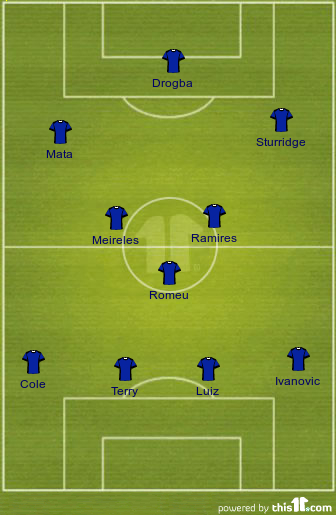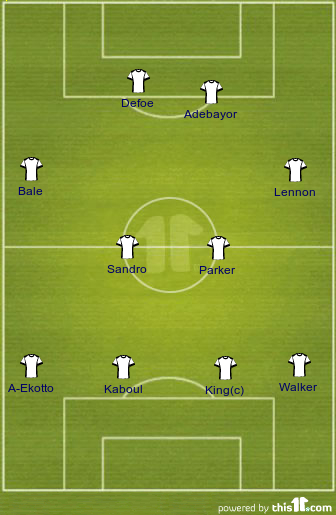Value for money? A look back at 2011’s Summer Transfers.
With all clubs except Spurs and Everton having played 11 games, courtesy of the disaffected youth of Tottenham smashing their own town centre up in the name of rage, here’s a look back at the tops and the flops of the summer transfer market, and also the unexpected bargain buys.
Manchester City. Where else to start?
Sergio Aguero; £35 million. 13 appearances, 10 goals, 2 assists.
One of world football’s hottest properties, and another statement of intent from City’s horrifically rich owners. Aguero made an instant impact with a 30 minute debut against Swansea City, scoring 2 goals and creating another. After arguably the best debut in recent Premier League history, Aguero has continued in fine form with a hat-trick in only his third game, as Manchester City continue to steamroll opposition – he’s a ready-made perhaps even superior replacement for his much maligned countryman Carlos Tevez. He’s been compared to his father-in-law Maradona, but Roberto Mancini was perhaps closer to the mark in terms of style when he likened him to Romario.
Samir Nasri; £25 million. 10 appearances, 2 goals, 6 assists.

One of the most mind-numbingly drawn out and contentious transfers of the summer. One of those “Will he – won’t he?” situations where in the end most people ended up thinking “Ah just bloody well get on with it”. Some Arsenal fans used rather courser language. Dropping into a midfield as strong as Manchester City’s is never going to be easy, having said that, it’s probably the only club where a £25 million price tag doesn’t automatically mean expectations are sky high. With David Silva in his second season in England outshining all the other stars in the galaxy assembled by Sheikh Mansour, Nasri hasn’t grabbed the headlines, but three assists on his debut against Tottenham isn’t a bad way to give the boss even more of a selection headache.
Owen Hargreaves; Free transfer. 2 appearances, 1 goal, 0 assists.
Wiley transfer coup, or simple posturing and one-upmanship from Manchester City? Sadly, as Hargreaves has yet again succumbed to injury, the latter may prove to be the case irrespective of any intentions for the former. Hargreaves has gone from cult hero at Old Trafford, to villain after this move, and then heaped insult upon injury (No pun intended) by criticising Manchester United’s medical staff, saying that he felt treated like a guinea pig. Such is his superiority over English players in a similar position, that should he ever be able to prove his fitness – in matches – then he would probably start for England (Notwithstanding Don Capello’s strange fixation with Gareth Barry). Sadly, his career seems to have become one long, stumbling, never-ending journey to come-back.
Manchester United. Evolution not revolution.
David de Gea; £18 million. 12 appearances. 3 clean sheets, 12 goals conceded.
The young Spaniard endured a baptism of fire into the Premiership and also into the ways of the British media. Still only 20 years of age, he was put under intense scrutiny and a couple of nervy moments including a few goals that he shouldn’t have let in meant that he was under pressure. Anders Lindegaard is proving to be an able contender, as Fergie settles his new ‘keeper. Some might say that the games player/goals conceded statistic is skewed by the 6-1 hammering by Manchester City, but – he let in 6 goals didn’t he? Still a long way to go for the wispy framed wispy bearded donut fancier.
Ashley Young; £16 million. 10 appearances, 3 goals, 6 assists.
Young finally got to play for the big club his talent deserved, and so far he’s made a very impressive start to his Manchester United career. Two goals against Arsenal in the 8-2 rout, and another in Europe to secure a 3-3 draw away from home. Normally deployed on the left flank, with Nani in the team it allows Ferguson to switch wingers at will. A very good signing, at 26 he’s be entering his prime years over the course of the next few seasons.
Phil Jones; £16.5 million. 17 appearances, 0 goals, 0 assists.
Jones is a beast. Centre-back, right-back, even defensive midfield – he’s a beast. In the Premier League, with Jones in the back four, United have played nine, winning eight and drawing once – conceding 5 goals. Without Jones in defence, United have one draw and one loss, conceding seven goals. Told you – BEAST.
Liverpool. Best of British?
Jordan Henderson; £18-20 million. 13 appearances, 1 goal, 1 assist.
A big price tag for a young player who is yet to settle at Anfield. He’s primarily a central midfielder, but has been used on the right wing the majority of the time. In a way, the reaction to Henderson’s start at Liverpool has been the exact opposite of Nasri’s at Manchester City. He’s not played well, but been overshadowed in this respect by other recent signings. Liverpool have drawn too many games, and have needed their talismanic skipper back from injury. Henderson is suggested as a long term successor to Gerrard, but on evidence so far, still has a long way to go. He’s got time on his side though.
Stewart Downing; £20 million. 11 appearances, 0 goals, 0 assists.
Those goals and assists statistics don’t read well for a winger. At 27, he should be in his prime and Liverpool can’t be happy with his contribution so far. When viewed alongside the cost of former team mate and fellow winger Ashley Young, it’s a poor bit of business.
Charlie Adam; £7 million. 11 appearances, 2 goals, 4 assists.
Not such a large transfer fee for this player. Blackpool had held onto him for as long as they could, looking to stay in the Premier League. Ultimately they failed, and got less than was offered in the previous January transfer window. Adam has made a solid if not exceptional start to his Liverpool career.
Chelsea. Splashing the cash once again.
Juan Mata; £23 million. 12 appearances, 3 goals, 4 assists.
Now, those are much better statistics for a winger. Mata has settled very well into life in the Premier League. Full of invention and attacking verve, he must be making Liverpool sick – he was a reported target for the reds before Chelsea swooped, and Liverpool ended up with Stewart Downing.
Romelu Lukaku. £18 million. 5 appearances, 0 goals, 0 assists.
Now, this chap is ranked amongst the hottest young properties in Europe, part of Belgium’s bewildering output of players at the moment. He’s 18 years of age, so has a lot of time on his side, and perhaps shouldn’t be judged quite yet. In his limited appearances as a sub he’s not yet convinced, and in his only start so far, was very disappointing. Lukaku is built like a light-heavy weight, is quick and strong, but has apparently not yet learned to pass, shoot, or head the ball with any accuaracy. One for the future…
Arsenal. Recovering form big losses.
Gervinho; £10.7 million. 13 appearances, 2 goals, 7 assists.
After 15 minutes on the pitch in his debut for the Gunners, Gervinho had scored two goals. Not a bad start! Since then he’s been more of a provider than a finisher, and is credited with prolonging Van Persie’s amazing run of scoring in the Premier League. Gervinho might look a bit ridiculous, with a bigger parting than the Red Sea, but he’s an effective player. He will also have learnt that getting a red card is no barrier to becoming a hero for your club, especially if it’s Joey Barton that you give a slap to.
Mikel Arteta; £10 million. 11 appearances, 2 goals, 1 assist.
Arteta’s goals and assists tally belie his comfortable start at Arsenal. Brought in to dampen the shock of (finally) losing Fabregas to Barcelona, the former Barca trainee has adapted to his playmaking role well, and looks a class act. It was bandied about that Arteta had been a panic buy, and the £10 million fee was too high for an injury prone 29 year old. This will only be borne out in time, but so far Arteta has been a hit at The Emirates.
Alex Oxlade-Chamberlain; £15 million. 4 appearances, 2 goals, 0 assists.
Another from the Southampton academy production line. He’s over-taken (under-taken?) Theo Walcott as the youngest Englishman to score in the Champions League, and also scored against Shrewsbury Town in the League Cup. A hot prospect of the scorching kind, he’s already been tipped by many to gatecrash England’s Euro 2012 squad.
Bargain Basement
Demba Ba - West Ham to Newcastle, Free transfer. 12 appearances, 8 goals, 2 assists.
After scoring 7 goals in only 12 league games for the doomed West Ham United last season, Demba Ba found himself the target of Everton, Sunderland and Newcastle’s affections. He opted for Tyneside, but was not an instant hit. His manager Alan Pardew revealed in a post-match interview that Ba was struggling to find form duer to the fasting observed for Ramadam. Two hat-tricks later, he’s a big part of Newcastles amazing start to the season.
Sebastian Larsson – Birmingham City to Sunderland, Free transfer. 12 appearances, 3 goals, 3 assists
Scored a wonderful volley against Liverpool to draw the game, and superb free kicks against Arsenal and Stoke City. Eckoned by Arsene Wenger to be the best free-kick taker in the league. He’s got fellow former Gooner Nicklas Bendtner to aim for with his crosses, which must be frustrating for the lad. Great player.



























